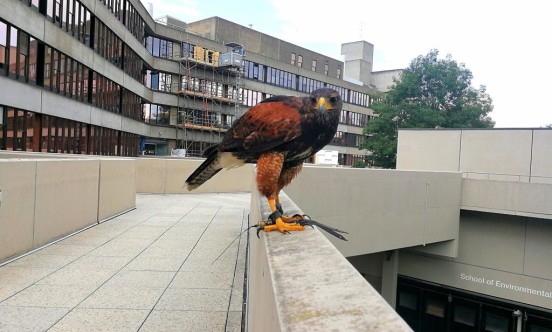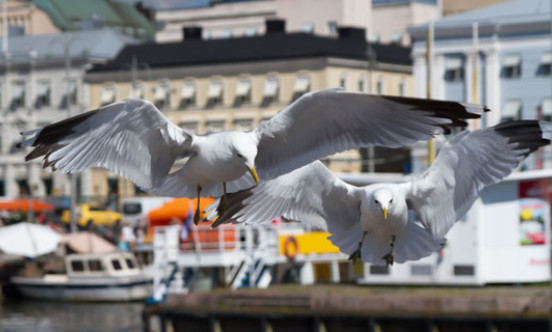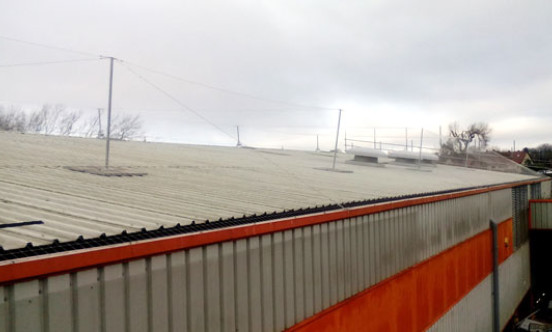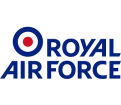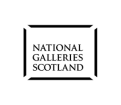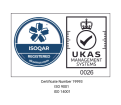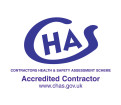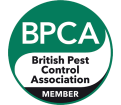
Call 0333 567 2020 for advice and quotes or contact us online
Nuisance gulls at Bristol Southmead Hospital atrium
Gallery
Damage to glass roof at Bristol Southmead Hospital
The Southmead Hospital building’s atrium is topped by a glass roof. The hospital was opened right in the middle of the gull’s mating season, during which birds are known to drop small stones from height – for reasons which are, as yet, unknown. The areas of the roof not constructed of glass were covered in pebbles to help with drainage, however, these proved to be just the right size for gulls with vandal tendencies. By the end of May around 50 glass panels in the new roof had been damaged, causing a significant health and safety risk. The measures that had previously been put in place to deter gulls included three hawk-shaped kites and a scarecrow with sound deterrents, but these were clearly not working.
Project overview
Rooftops are particularly appealing to gulls, they are free of predators and offer a great vantage point to locate food. When Bristol’s £430 million Southmead Hospital was completed in May 2014, it didn’t take long for the gulls to move in.
Not only is it the tallest building in the area, it also offered a variety of flat roofed areas – a particular preference for nesting Lesser Black Backed Gulls. All-in-all it was the perfect des-res for gulls and they swiftly established a presence. Unfortunately, the new neighbours soon came to exhibit some decidedly anti-social tendencies.
Our solution
Gull populations have been in recovery since they were granted protected status by the Wildlife and Countryside Act of 1981, which makes it illegal to kill or injure a bird, or to move or destroy an active nest. Gulls are moving inland and rooftop nesting has quadrupled across the UK over the past 15 years. Gull behaviours and lifecycle mean they can become a recurring problem in many locations. The birds have adapted to scavenge from business premises, landfill sites and waste bins. A nesting site in close proximity to humans brings with it numerous hazards, and so-called urban gulls are becoming a nuisance bird across many parts of the country.
The Bristol team from, NBC Environment were called in to prevent any further damage to the Southmead Hospital building and to disperse the birds.
Race against time:
The gulls would need to move out before the staff and patients could move in. There was another time imperative – it is only legal to remove eggs and nests up to the point the chicks hatch and this could happen from June onwards. Therefore, NBC Environment advised that a joint focus should be placed upon deterrents and nest removal. The first step was to deal with any active nests, one nest with eggs was removed and others were disposed of before eggs could be laid.
Nest clearance coincided with a 10 day intensive falconry programme using hawks and falcons flown from the roof of the hospital and was followed up with regular visits to keep the area bird free throughout the breeding season. NBC Environment used Harris hawks because they aren’t native to the UK and are intimidating to even the largest of gull species resident in this country.
Staying out of trouble:
Gulls do not nest with an active predator in the vicinity, therefore falconry is used to deter birds from settling. It didn’t take long to discourage the birds from roosting or nesting on the building. By tapping into the gulls’ natural instincts, NBC Environment was able to make the nesting area less desirable before a viable colony became established.
Return visits to the site the following year demonstrated the strategy had been effective. Although gulls were active in the surrounding areas, they would stay well clear of the hospital roof.
More information on our gull control services
For further information read our article "How to get rid of Seagulls".
